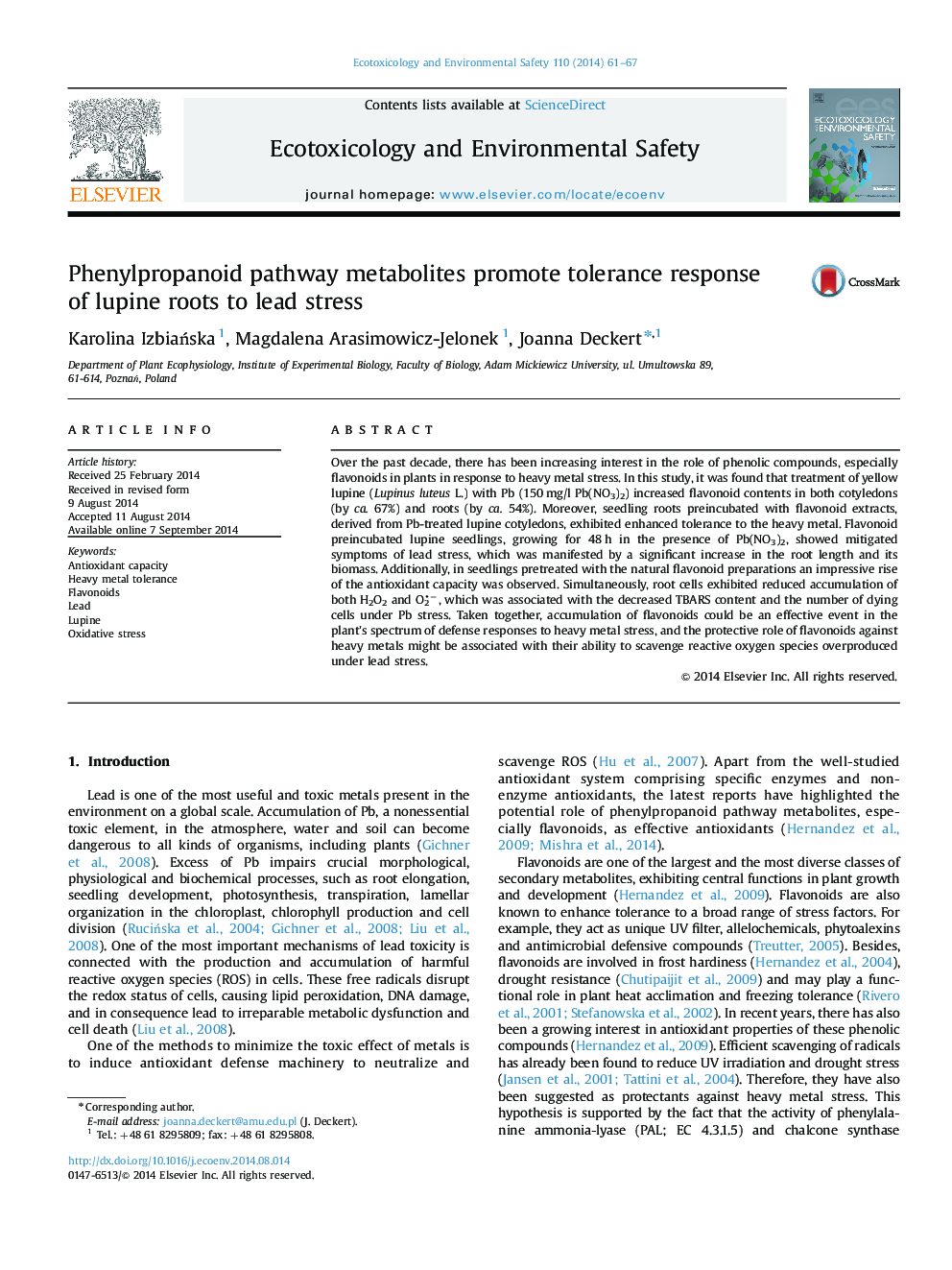| کد مقاله | کد نشریه | سال انتشار | مقاله انگلیسی | نسخه تمام متن |
|---|---|---|---|---|
| 4419901 | 1618953 | 2014 | 7 صفحه PDF | دانلود رایگان |
• The role of flavonoids in tolerance of lupine roots exposed to Pb is discussed.
• Pretreatment of roots with flavonoid preparations reduced symptoms of Pb toxicity.
• Flavonoid pretreated plants showed an increase in root length and cell viability.
• The protective effect was associated with an increase in the antioxidant activity.
Over the past decade, there has been increasing interest in the role of phenolic compounds, especially flavonoids in plants in response to heavy metal stress. In this study, it was found that treatment of yellow lupine (Lupinus luteus L.) with Pb (150 mg/l Pb(NO3)2) increased flavonoid contents in both cotyledons (by ca. 67%) and roots (by ca. 54%). Moreover, seedling roots preincubated with flavonoid extracts, derived from Pb-treated lupine cotyledons, exhibited enhanced tolerance to the heavy metal. Flavonoid preincubated lupine seedlings, growing for 48 h in the presence of Pb(NO3)2, showed mitigated symptoms of lead stress, which was manifested by a significant increase in the root length and its biomass. Additionally, in seedlings pretreated with the natural flavonoid preparations an impressive rise of the antioxidant capacity was observed. Simultaneously, root cells exhibited reduced accumulation of both H2O2 and O2−, which was associated with the decreased TBARS content and the number of dying cells under Pb stress. Taken together, accumulation of flavonoids could be an effective event in the plant׳s spectrum of defense responses to heavy metal stress, and the protective role of flavonoids against heavy metals might be associated with their ability to scavenge reactive oxygen species overproduced under lead stress.
Journal: Ecotoxicology and Environmental Safety - Volume 110, December 2014, Pages 61–67
